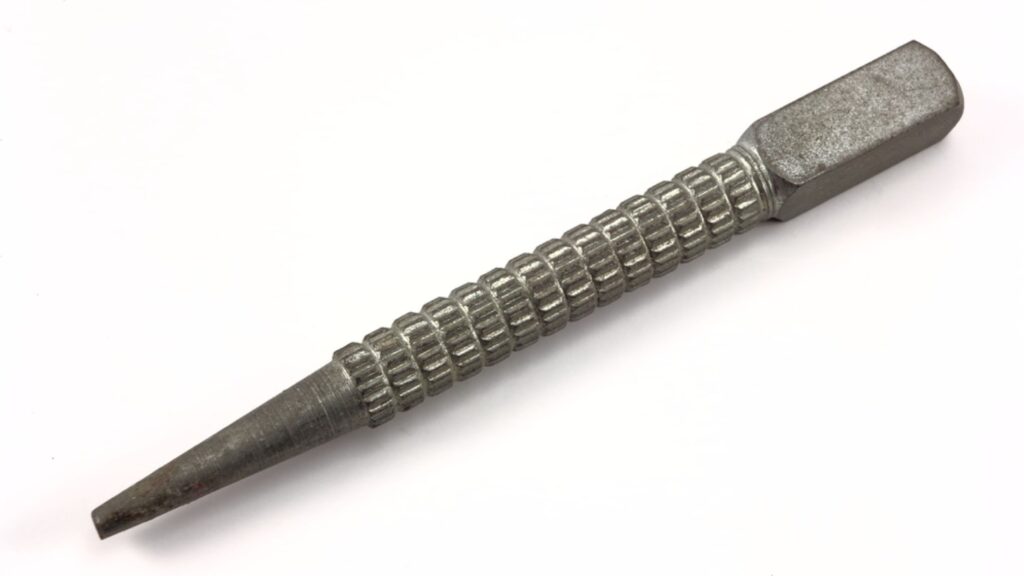Age-Old Tool Remains Preferred for Achieving a Smooth Finish
Occasionally, you encounter an object that truly baffles you. It makes you scratch your head and seek assistance from others (sometimes turning to the internet) to identify its purpose.
This item might leave you puzzled, but if you’re unsure what it is and eager to learn more, you’ve come to the right place.
Continue reading to discover the unsung hero of the construction industry!

The nail punch is a simple tool with roots that trace back to ancient civilizations, where builders and artisans needed innovative methods to handle nails. In its earliest forms, craftsmen utilized basic tools like chisels or hardened stones to drive nails below the wood surface, achieving a smooth finish necessary for both decorative and practical purposes.
According to various sources, “it is believed that these tools might have been the first implements our prehistoric ancestors used to carve wood and stone, as well as create clothing. Despite their simple construction, these tools are highly versatile, making them essential in any tool collection.”
Also referred to as a nail set, a nail punch is a compact, handheld device designed to drive nails slightly beneath the surface of a material, typically wood.
The tool—commonly used to achieve a smooth, finished appearance—features a pointed tip that aligns with the nail head and a flat end, which is struck with a hammer to push the nail head below the surface.
Subsequently, “the small indentation left behind is filled with putty,” according to Britannica.
Sinking Nails
The Industrial Revolution brought a surge of innovation to tools and machinery, and the nail punch was no exception. Factories began mass-producing nails, creating a demand for consistent tools that could accommodate various nail sizes and woodworking requirements.
Over time, the straightforward punch evolved into a staple in every toolbox, enabling carpenters to sink nails below the wood surface with accuracy. Covering these nail heads with filler not only improved the visual appeal but also enhanced the structure’s longevity by preventing rust and wear.
Modern-Day Nail Punches
In the 21st century, the nail punch tool has seen significant advancements, incorporating modern materials and ergonomic designs. Today, nail punches are often made from high-carbon steel or titanium and feature cushioned grips for comfort during extended use.
Key Features
- Material: Typically crafted from durable metals like steel or titanium to endure repeated hammering.
- Design: Often cylindrical with a tapered tip that matches the nail head size for precise placement.
- Sizes: Available in various dimensions to fit different nail diameters.
Uses
- Aesthetic Finishing: Allows nails to be recessed below the surface, enabling wood filler to cover the nail for a seamless appearance.
- Prevention of Damage: Protects the wood surface from dents or scratches during nail placement.
- Improved Durability: By sinking nails, it shields them from exposure to elements that could cause rust or deterioration.
A Tool for Everyone
Modern nail punches are available in sets that cater to a wide range of nail diameters. Some even feature laser etching for easy size identification, making them suitable for both hobbyists and professional carpenters. Technological advancements have introduced automatic or spring-loaded versions, minimizing the physical effort needed to sink nails into hard surfaces.
Why It Still Matters
In an era dominated by power tools, one might question whether a manual tool like the nail punch still has relevance. The answer is a definite yes!
Its simplicity, reliability, and affordability make it indispensable for tasks that require precision, such as trim work, cabinetry, and restoration projects.
Whether you’re crafting a delicate jewelry box or building a deck, the nail punch ensures a clean, professional finish. It’s also a favorite among restorers who prefer traditional methods over modern alternatives.
The nail set may not have the allure of high-tech gadgets, but its transformation from a basic tool to a sophisticated instrument highlights its significance in construction and woodworking.
Do you have one of these timeless tools tucked away in your toolbox?



